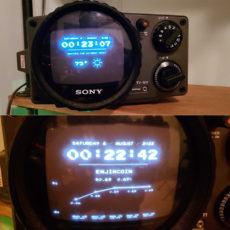
Photo credit: Diego Trujillo
Diego Trujillo Pisanty’s Blind Camera is essentially a Raspberry Pi-powered device that generates pictures from sound instead of light. It functions similar to a point-and-shoot camera, but rather than a lens, the horn is aimed at a sound and at the push of a button, it’s converted into an image.
What you end up with is an overview of the surrounding soundscape instead of the scene directly in front of the camera. It uses a custom-made artificial neural network (ANN) that finds a common representation between a sound and an image to achieve this. Blind Camera was trained with videos captured in Mexico City and each video frame is associated with its previous second of sound.
- Compact Powerhouse: Canon PowerShot V10 vlogging camera features a sleek, pocket-sized design; perfect for on-the-go creativity; enjoy the ultimate,...
- Versatile Vlogging Camera: Incredible low-light capabilities with a 15.2-megapixel 1-inch back-illuminated CMOS sensor; features a retractable...
- Adaptable Built-In Stand: Comes with an innovative stand that folds in both the front or back; content creator camera with a flexible stand allows for...



The network was then trained to (1) encode the sound into a vector, (2) decode it back to the matching image, and (3) try and convince another network that the resulting image is a photograph. Blind Camera thus combines elements of Autoencoders and Generative Adversarial Networks. Most artificial intelligence attempts to reduce bias, however, Blind Camera instead embraces itself as a Mexican urban object by interpreting the sounds it hears from this position,” said Trujillo.






